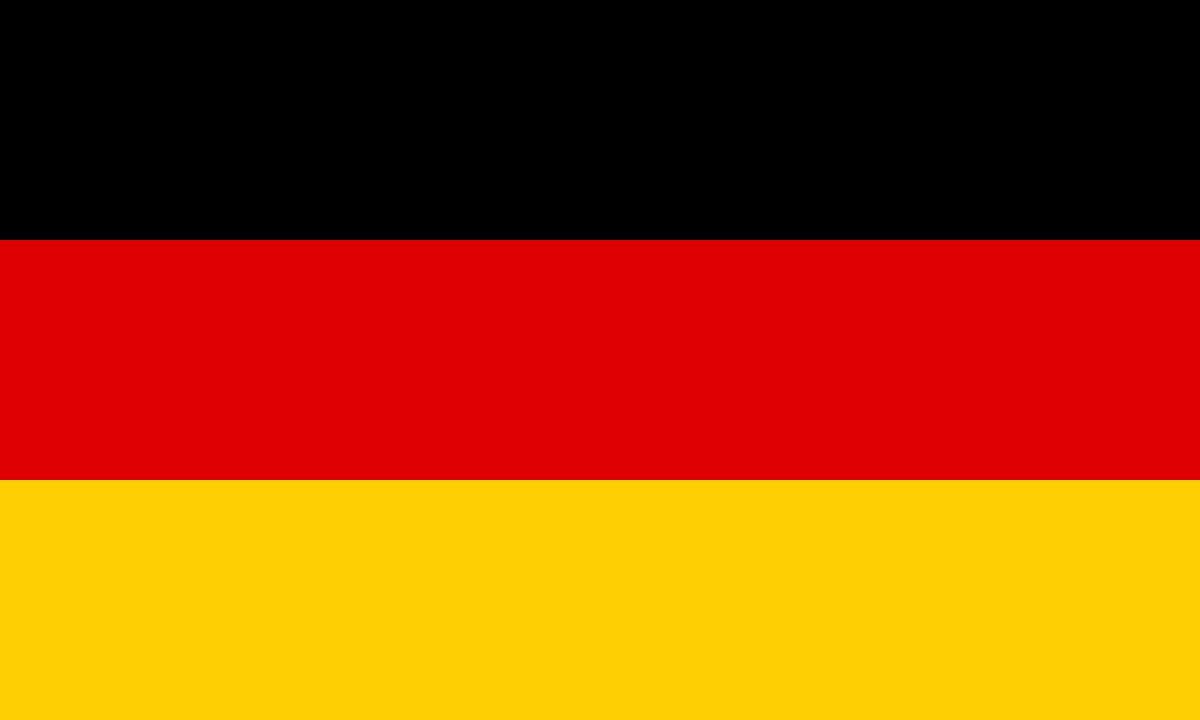The
national flag of
Germany (
German:
Flagge Deutschlands) is a
tricolour consisting of three equal horizontal bands displaying the
national colours of Germany:
black,
red, and
gold (
German:
Schwarz-Rot-Gold).
[1] The flag was first sighted in 1848 in the
German Confederation, with it being officially adopted as the national flag of the
Weimar Republic from 1919 to 1933, and again being in use since its reintroduction in
West Germany in 1949.
Since the mid-19th century, Germany has two competing traditions of national colours, black-red-gold and black-white-red. Black-red-gold were the colours of the
1848 Revolutions, the
Weimar Republic of 1919–1933 and the Federal Republic (since 1949). They were also
adopted by the
German Democratic Republic (1949–1990).
The colours black-white-red appeared for the first time in 1867, in the constitution of the
North German Confederation. This nation state for Prussia and other north and central German states was expanded to the south German states in 1870–71, under the name
German Empire. It kept these colours until the revolution of 1918–19. Thereafter, black-white-red became a symbol of the political right. The Nazis (
National Socialist German Worker's Party) re-established these colours along with the party's own
swastika flag in 1933. After World War II,
black-white-red was still used by some conservative groups or by groups of the
far right, as it is not forbidden, unlike proper
Nazi symbols.
Black-red-gold is the official flag of the Federal Republic of Germany.





